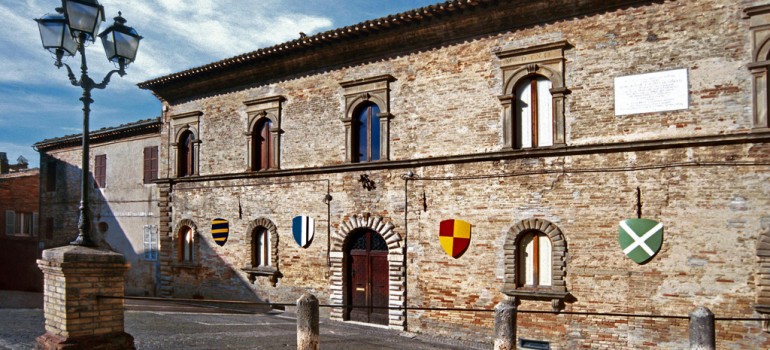
Monterubbiano is situated on the northern side of the Aso valley at 463 m. above sea level, at about 6 km from the sea, in the province of Fermo. The archaeological remains found in the area date its origins back to Neolithic times. In the Civico Archeologico Museum one can see remains of the Piceno and Etrurian era. In the Cultural Centre St.Francesco, a Franciscan convent of the 13th century, are an auditorium, the exhibition Hall “Rosa Calzecchi Onesti”, the Municipal Library ” Louis Centanni , ” and a botanical garden. At the center of the village stands the 14th century Palazzo Comunale ; its Picture Gallery houses twenty paintings, mainly oil and canvas, dating 16th and 17th century. In Palazzo Calzecchi Onesti, built between 1553 and 1562 lived the physicist Temistocle Calzecchi Onesti who, in 1880 , invented the Coherer, a tool used by Guglielmo Marconi for the telegraph. Worth visiting is the Vincenzo Pagani theatre, opened in 1875 for a total of 260 seats, and the Jewish Ghetto. There are many churches in the centre: the Church of SS. Giovanni Battista and Evangelista (13th century), St. Maria dell’Olmo (11th to 12th century), St. Michele Arcangelo (11th century) SS. Flaviano and Biagio Abbey ( 13th century), privately owned, which has a beautiful portal on the side wall, the Pievania of SS. Stefano and Vincenzo (11th century), Santa Maria dei Monti (16th century) a jewl of simplicity in its forms, St. Andrea (12th century) which has a templar origin, St. Agostino; on its ceiling one can admire beautiful wall paintings, SS. Crocifisso di Piano Nuovo (16th century), St.Maria dei Letterati built in 18th century on the foundations of St.Maria della Misericordia. Here there are works of great artistic value, including the famous painting “Assunzione della Vergine” dated 1539 by Vincenzo Pagani (1490 – 1568). Just outside the town walls are: the Monumental Cemetery, designed by the local architect Luca Galli, the Historical Park of San Rocco, a beautiful Italian-style garden (19th century). The town overlooks the flourishing Aso Valley; Rubianello has a big industrial area and is one of the major regional fruit and vegetable producing area. A typical dish of the culinary tradition of Monterubbiano is “tagliatelle fritte” (fried noodles).